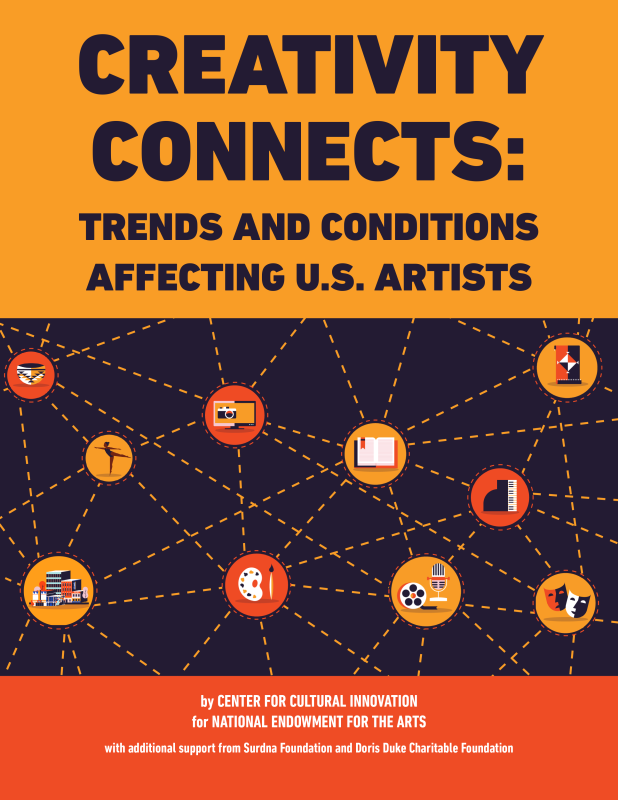2015

The cultural landscape is very different from when the NEA first emerged in 1965. Artists are using diverse platforms to create new artistic forms, and audiences are using multiple and evolving platforms to access them. At the same time, creativity is increasingly valued in the marketplace, and by fields as varied as technology, science, healthcare, and agriculture.
The 50th anniversary isn’t just a time for celebration; it’s also an opportunity for reflection. In 2015, the NEA launched an initiative, Creativity Connects, to examine and uncover the ways the agency could support a sustainable future for the arts and creativity in our nation by showing how the arts are central to the country’s creative ecosystem, investigating how support systems for the arts have changed, and exploring how the arts connect with other industries.
There were two components: a research report and a grant program. The report, Creativity Connects: Trends and Conditions Affecting U.S. Artists, examined the current state of support systems for artists. Five areas were identified that are needed to support the arts: affordable spaces, access to capital, diverse markets, expansive networks, and a wide range of skills. To develop the report, NEA and the Center for Cultural Innovation partnered to conduct extensive information-gathering and analysis, including conducting 65 in-depth interviews, convening ten roundtables across the country, reviewing more than 300 documents, gathering 30 field experts to review the initial findings, and commissioning 18 essays written by leaders in the field. The report uses a wide lens to consider who is an artist, how artists are working, what factors influence their work, and what we can do to better support them.
The second component was the Art Works: Creativity Connects grant program to support partnerships between arts and non-arts organizations. The primary goals of Creativity Connects grants were to demonstrate the value of working with the arts, support infrastructure for the arts to work in new ways with new sectors, build bridges that create new relationships, and create innovative partnerships that advance common goals. Over two fiscal years, the grant program awarded 70 grants totaling $4.35 million on projects where artists and arts organizations worked with sports teams, lawyers, ecology experts, and health professionals, among others, projects that help people understand the valuable impact the arts have on our lives, in ways they may or may not be aware of.

